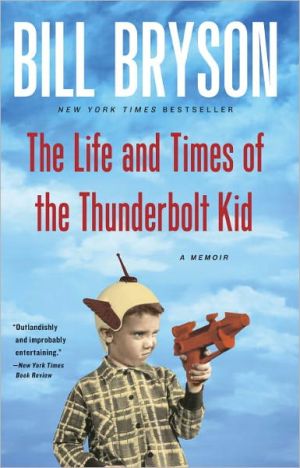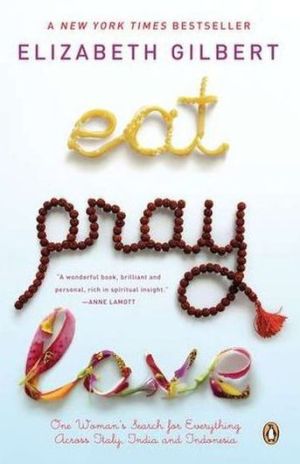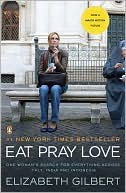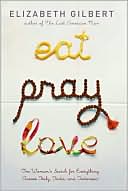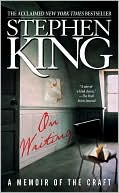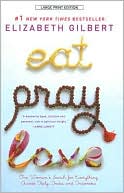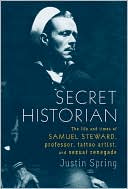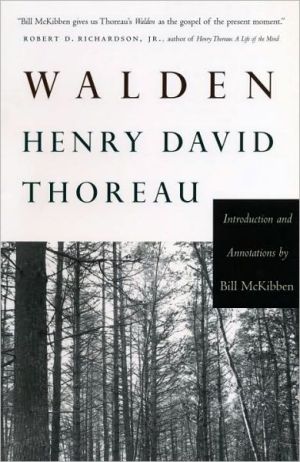The Life and Times of the Thunderbolt Kid: A Memoir
From one of the most beloved and bestselling authors in the English language, a vivid, nostalgic, and utterly hilarious memoir of growing up in the 1950s\ \ Bill Bryson was born in the middle of the American century—1951—in the middle of the United States—Des Moines, Iowa—in the middle of the largest generation in American history—the baby boomers. As one of the best and funniest writers alive, he is perfectly positioned to mine his memories of a totally all-American childhood for 24-carat...
Search in google:
From one of the most beloved and bestselling authors in the English language, a vivid, nostalgic, and utterly hilarious memoir of growing up in the 1950sBill Bryson was born in the middle of the American century—1951—in the middle of the United States—Des Moines, Iowa—in the middle of the largest generation in American history—the baby boomers. As one of the best and funniest writers alive, he is perfectly positioned to mine his memories of a totally all-American childhood for 24-carat memoir gold. Like millions of his generational peers, Bill Bryson grew up with a rich fantasy life as a superhero. In his case, he ran around his house and neighborhood with an old football jersey with a thunderbolt on it and a towel about his neck that served as his cape, leaping tall buildings in a single bound and vanquishing awful evildoers (and morons)—in his head—as "The Thunderbolt Kid." Using this persona as a springboard, Bill Bryson re-creates the life of his family and his native city in the 1950s in all its transcendent normality—a life at once completely familiar to us all and as far away and unreachable as another galaxy. It was, he reminds us, a happy time, when automobiles and televisions and appliances (not to mention nuclear weapons) grew larger and more numerous with each passing year, and DDT, cigarettes, and the fallout from atmospheric testing were considered harmless or even good for you. He brings us into the life of his loving but eccentric family, including affectionate portraits of his father, a gifted sportswriter for the local paper and dedicated practitioner of isometric exercises, and OF his mother, whose job as the home furnishing editor for the same paper left her little time for practicing the domestic arts at home. The many readers of Bill Bryson’s earlier classic, A Walk in the Woods, will greet the reappearance in these pages of the immortal Stephen Katz, seen hijacking literally boxcar loads of beer. He is joined in the Bryson gallery of immortal characters by the demonically clever Willoughby brothers, who apply their scientific skills and can-do attitude to gleefully destructive ends. Warm and laugh-out-loud funny, and full of his inimitable, pitch-perfect observations, The Life and Times of the Thunderbolt Kid is as wondrous a book as Bill Bryson has ever written. It will enchant anyone who has ever been young. The New York Times - Jay Jennings As a humorist, Bryson falls somewhere between the one-liner genius of Dave Barry and the narrative brilliance of David Sedaris…at his best he spools out operatically funny vignettes of sustained absurdity that nevertheless remain grounded in universal experience. These accounts, like the description of the bumper-car ride at a run-down amusement park or the tale of a friend's father's descent from the high dive at a local lake, defy excerpting; when taken whole, they will leave many readers de-couched. Occasionally in the course of his reminiscences, Bryson abandons punch lines and demonstrates a lyrical gift for the tactile and noisome nature of childhood…that elevates the work to the level of classics in the genre like Laurie Lee's Cider with Rosie.
Chapter 1\ HOMETOWN\ SPRINGFIELD, ILL. (AP)—The State Senate of Illinois yesterday disbanded its Committee on Efficiency and Economy “for reasons of efficiency and economy.”\ —Des Moines Tribune, February 6, 1955\ IN THE LATE 1950s, the Royal Canadian Air Force produced a booklet on isometrics, a form of exercise that enjoyed a short but devoted vogue with my father. The idea of isometrics was that you used any unyielding object, like a tree or a wall, and pressed against it with all your might from various positions to tone and strengthen different groups of muscles. Since everybody already has access to trees and walls, you didn't need to invest in a lot of costly equipment, which I expect was what attracted my dad.\ What made it unfortunate in my father’s case is that he would do his isometrics on airplanes. At some point in every flight, he would stroll back to the galley area or the space by the emergency exit and, taking up the posture of someone trying to budge a very heavy piece of machinery, he would begin to push with his back or shoulder against the outer wall of the plane, pausing occasionally to take deep breaths before returning with quiet grunts to the task.\ Since it looked uncannily, if unfathomably, as if he were trying to force a hole in the side of the plane, this naturally drew attention. Businessmen in nearby seats would stare over the tops of their glasses. A stewardess would pop her head out of the galley and likewise stare, but with a certain hard caution, as if remembering some aspect of her training that she had not previously been called upon to implement.\ Seeing that he had observers, my father would straighten up and smile genially and begin to outline the engaging principles behind isometrics. Then he would give a demonstration to an audience that swiftly consisted of no one. He seemed curiously incapable of feeling embarrassment in such situations, but that was all right because I felt enough for both of us—indeed, enough for us and all the other passengers, the airline and its employees, and the whole of whatever state we were flying over.\ Two things made these undertakings tolerable. The first was that back on solid ground my dad wasn’t half as foolish most of the time. The second was that the purpose of these trips was always to go to a Major League city, stay in a big downtown hotel, and attend ball games, and that excused a great deal—well, everything, in fact. My dad was a sportswriter for The Des Moines Register, which in those days was one of the country’s best papers, and often took me along on trips through the Midwest. Sometimes these were car trips to places like Sioux City or Burlington, but at least once a summer we boarded a big silver plane—a huge event in those days—and lumbered through the summery skies, up among the fleecy clouds, to St. Louis or Chicago or Detroit to take in a home stand. It was a kind of working holiday for my dad.\ Baseball, like everything else, was part of a simpler world in those days, and I was allowed to go with him into the clubhouse and dugout and onto the field before games. I have had my hair tousled by Stan Musial. I have handed Willie Mays a ball that had skittered past him as he played catch. I have lent my binoculars to Harvey Kuenn (or possibly it was Billy Hoeft) so that he could scope some busty blonde in the upper deck. Once on a hot July afternoon I sat in a nearly airless clubhouse under the left–field grandstand at Wrigley Field beside Ernie Banks, the Cubs’ great shortstop, as he autographed boxes of new white baseballs (which are, incidentally, one of the most pleasurably aromatic things on earth, and worth spending time around anyway). Unbidden, I took it upon myself to sit beside him and pass him each new ball. This slowed the process considerably, but he gave a little smile each time and said thank you as if I had done him quite a favor. He was the nicest human being I have ever met. It was like being friends with God.\ I CAN'T IMAGINE there has ever been a more gratifying time or place to be alive than America in the 1950s. No country had ever known such prosperity. When the war ended the United States had $26 billion worth of factories that hadn't existed before the war, $140 billion in savings and war bonds just waiting to be spent, no bomb damage, and practically no competition. All that American companies had to do was stop making tanks and battleships and start making Buicks and Frigidaires—and boy did they.\ By 1951, when I came sliding down the chute, almost 90 percent of American families had refrigerators, and nearly three-quarters had washing machines, telephones, vacuum cleaners, and gas or electric stoves—things that most of the rest of the world could still only fantasize about. Americans owned 80 percent of the world's electrical goods, controlled two–thirds of the world’s productive capacity, produced more than 40 percent of its electricity, 60 percent of its oil, and 66 percent of its steel. The 5 percent of people on Earth who were Americans had more wealth than the other 95 percent combined.\ Remarkably, almost all this wealth was American made. Of the 7.5 million new cars sold in America in 1954, for instance, 99.93 percent were made in America by Americans. We became the richest country in the world without needing the rest of the world.\ I don’t know of anything that better conveys the happy bounty of the age than a photograph (reproduced in this volume in the frontmatter of the book) that ran in Life magazine two weeks before my birth. It shows the Czekalinski family of Cleveland, Ohio—Steve, Stephanie, and two sons, Stephen and Henry—surrounded by the two and a half tons of food that a typical blue–collar family ate in a year. Among the items they were shown with were 450 pounds of flour, 72 pounds of shortening, 56 pounds of butter, 31 chickens, 300 pounds of beef, 25 pounds of carp, 144 pounds of ham, 39 pounds of coffee, 690 pounds of potatoes, 698 quarts of milk, 131 dozen eggs, 180 loaves of bread, and 8 1/2 gallons of ice cream, all purchased on a budget of $25 a week. (Mr. Czekalinski made $1.96 an hour as a shipping clerk in a DuPont factory.) In 1951, the average American ate 50 percent more than the average European.\ No wonder people were happy. Suddenly they were able to have things they had never dreamed of having, and they couldn't believe their luck. There was, too, a wonderful simplicity of desire. It was the last time that people would be thrilled to own a toaster or waffle iron. If you bought a major appliance, you invited the neighbors around to have a look at it. When I was about four my parents bought an Amana Stor–Mor refrigerator and for at least six months it was like an honored guest in our kitchen. I’m sure they’d have drawn it up to the table at dinner if it hadn’t been so heavy. When visitors dropped by unexpectedly, my father would say: “Oh, Mary, is there any iced tea in the Amana?” Then to the guests he’d add significantly: “There usually is. It’s a Stor–Mor.”\ “Oh, a Stor–Mor,” the male visitor would say and elevate his eyebrows in the manner of someone who appreciates quality cooling. “We thought about getting a Stor–Mor ourselves, but in the end we went for a Philco Shur–Kool. Alice loved the EZ-Glide vegetable drawer and you can get a full quart of ice cream in the freezer box. That was a big selling point for Wendell Junior, as you can imagine!”\ They’d all have a good laugh at that and then sit around drinking iced tea and talking appliances for an hour or so. No human beings had ever been quite this happy before.\ People looked forward to the future, too, in ways they never would again. Soon, according to every magazine, we were going to have underwater cities off every coast, space colonies inside giant spheres of glass, atomic trains and airliners, personal jet packs, a gyrocopter in every driveway, cars that turned into boats or even submarines, moving sidewalks to whisk us effortlessly to schools and offices, dome–roofed automobiles that drove themselves along sleek superhighways allowing Mom, Dad, and the two boys (Chip and Bud or Skip and Scooter) to play a board game or wave to a neighbor in a passing gyrocopter or just sit back and enjoy saying some of those splendid words that existed in the fifties and are no longer heard: mimeograph, rotisserie, stenographer, icebox, dime store, rutabaga, Studebaker, panty raid, bobby socks, Sputnik, beatnik, canasta, Cinerama, Moose Lodge, pinochle, daddy–o.\ For those who couldn’t wait for underwater cities and self–driving cars, thousands of smaller enrichments were available right now. If you were to avail yourself of all that was on offer from advertisers in a single issue of, let's say, Popular Science from, let's say, December 1956, you could, among much else, teach yourself ventriloquism, learn to cut meat (by correspondence or in person at the National School of Meat Cutting in Toledo, Ohio), embark on a lucrative career sharpening skates door to door, arrange to sell fire extinguishers from home, end rupture troubles once and for all, build radios, repair radios, perform on radio, talk on radio to people in different countries and possibly on different planets, improve your personality, get a personality, acquire a manly physique, learn to dance, create personalized stationery for profit, or “make big $$$$” in your spare time at home building lawn figures and other novelty ornaments.\ My brother, who was normally quite an intelligent human being, once invested in a booklet that promised to teach him how to throw his voice. He would say something unintelligible through rigid lips, then quickly step aside and say, “That sounded like it came from over there, didn’t it?” He also saw an ad in Mechanics Illustrated that invited him to enjoy color television at home for 65 cents plus postage, placed an order, and four weeks later received in the mail a multicolored sheet of transparent plastic that he was instructed to tape over the television screen and watch the image through.\ Having spent the money, my brother refused to accept that it was a touch disappointing. When a human face moved into the pinkish part of the screen or a section of lawn briefly coincided with the green portion, he would leap up in triumph. “Look! Look! That’s what color television’s gonna look like,” he would say. “This is all just experimental, you see.”\ In fact, color television didn't come to our neighborhood until nearly the end of the decade, when Mr. Kiessler on St. John’s Road bought an enormous RCA Victor Consolette, the flagship of the RCA fleet, for a lot of money. For at least two years his was the only known color television in private ownership, which made it a fantastic novelty. On Saturday evenings the children of the neighborhood would steal into his yard and stand in his flower beds to watch a program called My Living Doll through the double window behind his sofa. I am pretty certain that Mr. Kiessler didn't realize that two dozen children of various ages and sizes were silently watching the TV with him or he wouldn’t have played with himself quite so enthusiastically every time the nubile Julie Newmar bounded onto the screen. I assumed it was some sort of isometrics.\ EVERY YEAR FOR NEARLY FORTY YEARS, from 1945 until his retirement, my father went to the World Series for the Register. It was, by an immeasurably wide margin, the high point of his working year. Not only did he get to live it up for two weeks on expenses in some of the nation’s most cosmopolitan and exciting cities—and from Des Moines all cities are cosmopolitan and exciting—but he also got to witness many of the most memorable moments of baseball history: Al Gionfriddo’s miraculous one–handed catch of a Joe DiMaggio line drive in 1947, Don Larsen's perfect game in 1956, Bill Mazeroski’s series–winning homer of 1960. These may mean nothing to you—they would mean nothing to most people these days, I suppose—but they were moments of near ecstasy that were shared by a nation.\ In those days, World Series games were played during the day, so you had to play hooky or develop a convenient chest infection (“Jeez, Mom, the teacher said there’s a lot of TB going around”) if you wanted to see a game. Crowds would lingeringly gather wherever a radio was on or a TV played. Getting to watch or listen to any part of a World Series game, even half an inning at lunchtime, became a kind of illicit thrill. And if you did happen to be present when something monumental occurred, you would remember it for the rest of your life. My father had an uncanny knack for being there when such moments were made—never more so than in the seminal (and what an apt word that can sometimes be) season of 1951 when our story begins.\ In the National League, the Brooklyn Dodgers had been cruising toward an easy pennant when, in mid-August, their crosstown rivals, the Giants, suddenly stirred to life and began a highly improbable comeback. Baseball in those days dominated the American psyche in a way that can scarcely be imagined now. Professional football and basketball existed, of course, and were followed, but essentially as minor spectacles that helped to pass the colder months until the baseball season resumed. The Super Bowl was years from its invention. The only sporting event that gripped the nation—the one time in the year when even your mom knew what was going on in the sporting world—was the World Series. And seldom did the race to reach the series hold America more firmly in thrall than in the late summer and early fall of 1951.\ After months of comatose play, the Giants suddenly could do no wrong. They won thirty–seven of forty–four games down the home stretch, cutting away at the Dodgers’ once–unassailable lead in what began to seem a fateful manner. By mid–September people talked of little else but whether the Dodgers could hold on. All across the nation fans dropped dead from the heat and excitement. When the dust cleared after the last day’s play, the standings showed the two teams with identical records, so a three-game playoff was hastily arranged to determine who could claim the pennant. The Register, like nearly all distant papers, didn’t dispatch a reporter to these impromptu playoffs, but elected to rely on wire services for its coverage until the series proper got under way.
\ From Barnes & NobleHumorist Bill Bryson thinks of himself as middling: He was born in Middle America, halfway through the American Century at the very midpoint of the Baby Boom. Fortunately for us, there is nothing average or mediocre about his talent. The Life & Times of the Thunderbolt Kid recapitulates the rich fantasy life and occasional rude awakenings of this once-budding Iowa superhero. Bryson's sly, lighthearted nostalgia will remind older readers of Jean Shepherd.\ \ \ \ \ Jay JenningsAs a humorist, Bryson falls somewhere between the one-liner genius of Dave Barry and the narrative brilliance of David Sedaris…at his best he spools out operatically funny vignettes of sustained absurdity that nevertheless remain grounded in universal experience. These accounts, like the description of the bumper-car ride at a run-down amusement park or the tale of a friend's father's descent from the high dive at a local lake, defy excerpting; when taken whole, they will leave many readers de-couched.\ Occasionally in the course of his reminiscences, Bryson abandons punch lines and demonstrates a lyrical gift for the tactile and noisome nature of childhood…that elevates the work to the level of classics in the genre like Laurie Lee's Cider with Rosie.\ —The New York Times\ \ \ \ Juliet WittmanBill Bryson is erudite, irreverent, funny and exuberant, making the temptation to quote endlessly from The Life and Times of the Thunderbolt Kid: A Memoirhard to resist. Bryson interweaves childhood reminiscences seamlessly with observations about 1950s America, evoking a zeitgeist that will be familiar to almost everyone past middle age. Though his memories are for the most part pleasurable, he doesn't evade the darker side of the times…\ —The Washington Post\ \ \ \ \ Publishers WeeklyFor most of his adult life, Bryson has made his home in the U.K, yet he actually entered the world in 1951 as part of America's postwar baby boom and spent his formative years in Des Moines, Iowa. Bryson wistfully recounts a childhood of innocence and optimism, a magical point in time when a distinct sense of regional and community identity briefly—but blissfully—coexisted with fledgling technology and modern convenience. Narrating, Bryson skillfully wields his amorphous accent—somehow neither fully British nor Midwestern—to project a genial and entertaining tour guide of lost Americana. In portraying the boyish exploits of his "Thunderbolt Kid" superhero alter ego, he convincingly evokes both the unadulterated joys and everyday battles of childhood. As an added bonus, the final CD features an interview with Bryson in which he reflects on the process of writing his autobiography and discussing the broader social and cultural insights that he gleaned from the experience. Simultaneous release with the Broadway hardcover (Reviews, July 10). (Nov.)\ Copyright 2006 Reed Business Information.\ \ \ \ \ Library Journal"I can't imagine there has ever been a more gratifying time or place to be alive than America in the 1950s," writes Bryson (A Walk in the Woods), and his wryly amusing stories of his childhood in Des Moines almost convince the reader this is true. Bryson recounts the world of his younger self, buried in comic books in the Kiddie Corral at the local supermarket, resisting civil defense drills at school, and fruitlessly trying to unravel the mysteries of sex. His alter ego, the Thunderbolt Kid, born of his love for comic-book superheroes and the need to vaporize irritating people, serves as an astute outside observer of life around him. His family's foibles are humorously presented, from his mother's burnt, bland cooking to his father's epic cheapness. The larger world of 1950s America emerges through the lens of "Billy's" world, including the dark underbelly of racism, the fight against communism, and the advent of the nuclear age. Recommended for public libraries. [See Prepub Alert, LJ 6/1/06.]-Alison M. Lewis, Drexel Univ. Lib., Philadelphia Copyright 2006 Reed Business Information.\ \ \ \ \ Library JournalA noted travel humorist and the author of several books on the English language, Bryson (A Short History of Nearly Everything) here offers a departure-a memoir about growing up in Des Moines in the 1950s. The title is taken from his childhood fantasy life where he existed as a superhero. Bryson effortlessly weaves together the national themes of the 1950s-civil defense drills and bland foods-with the Norman Rockwell world found in most small towns. Charming features long since gone include a downtown department store with a tea room (where children could select a toy from the toy chest), a cafeteria where you turned on a light for service, and a supermarket with a Kiddie Corral filled with comic books where children stayed while their mothers shopped. It's almost impossible to imagine anyone other than Bryson reading his words; his narration adds a special quality to the experience. Regardless of one's age, location, or gender, this book will fondly evoke memories of childhood. Alternately wildly entertaining and innocently nostalgic, this is a book not to be missed. Highly recommended for all public libraries.\ —Gloria Maxwell\ \ \ \ \ \ School Library JournalAdult/High School-The Thunderbolt Kid was "born" in the 1950s when six-year-old Bryson found a mysterious, scratchy green sweater with a satiny thunderbolt across the chest. The jersey bestowed magic powers on the wearer-X-ray vision and the power to zap teachers and babysitters and deflect unwanted kisses from old people. These are the memoirs of that Kid, whose earthly parents were not really half bad-a loving mother who didn't cook and was pathologically forgetful, but shared her love of movies with her youngest child, and a dad who was the "greatest baseball writer that ever lived" and took his son to dugouts and into clubhouses where he met such famous players as Stan Musial and Willie Mays. Simpler times are conveyed with exaggerated humor; the author recalls the middle of the last century in the middle of the country (Des Moines, IA), when cigarettes were good for you, waxy candies were considered delicious, and kids were taught to read with Dick and Jane. Students of the decade's popular culture will marvel at the insular innocence described, even as the world moved toward nuclear weapons and civil unrest. Bryson describes country fairs and fantastic ploys to maneuver into the tent to see the lady stripper, playing hookey, paper routes, church suppers, and more. His reminiscences will entertain a wide audience.-Jackie Gropman, Chantilly Regional Library, Fairfax County, VA Copyright 2006 Reed Business Information.\ \ \ \ \ Kirkus ReviewsA charming, funny recounting of growing up in Des Moines during the sleepy 1950s. Bryson (A Short History of Nearly Everything, 2003, etc.) combines nostalgia, sharp wit and a dash of hyperbole to recreate his childhood in the rural Midwest. Using a homespun, idiosyncratic voice reminiscent of Jean Shepherd, he tells of a generally happy youth as the son of a loving but often absent sportswriter father and a dizzyingly absentminded mother, a "home furnishings" reporter at the Des Moines Register who once sent him to school wearing her own peddle-pushers. The journey includes visits to stately downtown Des Moines, where Younkers, the preeminent local department store, offered free gifts to patrons of its "elegant" Tea Room; the annual Iowa State Fair, where Bryson tried desperately to gain access to the notorious "strippers' tent"; and the bacchanalia of Saturday matinees at the local movie theater, where candy and popcorn flew through the darkened theater like confetti. We also meet some of Bryson's colorful comrades, like George Willoughby, an adept vending-machine thief who also placed bugs in his soup in order to get free ice-cream sundaes from the stricken restaurant manager; and the troubled Stephen Katz, a prodigious substance-abuser who organized the theft of an entire boxcar of Old Milwaukee beer. Eventually, progress caught up with Des Moines, and even young Bryson's imagined superpowers can't stop it. Holiday Inns and Travelodges replaced the town's stately Victorian homes, and the family-owned downtown stores, movie palaces and restaurants were undone by shopping malls and multiplexes. In that sense, the decline of downtown Des Moines mirrors that of hundreds of small andmidsized towns across the country. But in Bryson's bittersweet memoir, he reminds readers of the joys many people forgot to even miss. A great, fun read, especially for Baby Boomers nostalgic for the good old days.\ \ \ \ \ From the Publisher“A charming, funny recounting of growing up in Des Moines during the sleepy 1950s. Bryson combines nostalgia, sharp wit and a dash of hyperbole to recreate his childhood in the rural Midwest. A great, fun read, especially for Baby Boomers nostalgic for the good old days.” \ –Kirkus Reviews *Starred*\ “While many memoirs convey a bittersweet nostalgia, Bill Bryson’s loving look at his childhood in The Life and Times of the Thunderbolt Kid is genuinely sweet. Framed within young Bryson’s fantasy of being a superhero, it matches the author’s sparkling wit with his vivid, candid memories of 1950s America. Adding a healthy dose of social history, Bryson tells a larger story, with vignettes that reveal the gap between America’s postwar glow and its underlying angst. Bryson also touchingly recalls his father’s career as a sportswriter, his mother’s awkward experiments with cooking and the outrageous adventures of his infamous traveling companion, Stephen Katz.”\ –Publishers Weekly, Fall Preview\ “Bill Bryson’s laugh-out-loud pilgrimage through his Fifties childhood in heartland America is a national treasure. It’s full of insights, wit, and wicked adolescent fantasies.”\ –Tom Brokaw, NBC News\ “Bryson recounts the world of his younger self, buried in comic books in the Kiddie Corral at the local supermarket, resisting civil defense drills at school, and fruitlessly trying to unravel the mysteries of sex. His alter ego, the Thunderbolt Kid, born of his love for comic-book superheroes and the need to vaporize irritating people, serves as an astute outside observer of life around him. His family’s foibles are humorously presented, from his mother’s burnt, bland cooking to his father’s epic cheapness.\ The larger world of 1950s America emerges through the lens of ‘Billy’s’ world, including the dark underbelly of racism, the fight against communism, and the advent of the nuclear age.”\ –Library Journal\ “Travel humorist Bryson took a decisive stand regarding his hometown almost 20 years ago when he published the story “Fat Girls in Des Moines” in Granta magazine. Now the author delves more deeply into his midwestern roots in a bittersweet laugh-out-loud recollection of his growing-up years. This affectionate portrait wistfully recalls the bygone days of Burns and Allen and downtown department stores but with a good-natured elbow poke to the ribs.”\ –Booklist Reviews\ "Takes us on yet another amiable ramble through terrain viewed with his characteristic mixture of bemused wit, acerbic astonishment and sweet benevolence…we come closest to the real Bryson in this, his first true memoir…encompasses so much of human experience that you want to smile and sob at once…Bryson’s evocation of an era is near perfect: tender, hilarious and true. "\ –The Times (UK)\ "A wittily incisive book about innocence, and its limits, but in no sense an innocent book…Like Alan Bennett, another ironist posing as a sentimentalist, Bryson can play the teddy-bear and then deliver a sudden, grizzly-style swipe…might tell us as much about the oddities of the American way as a dozen think-tanks. "\ –Independent\ "Always witty and sometimes hilarious…wonderfully funny and touching." \ –Literary Review (UK)\ "A funny, effortlessly readable, quietly enchanted memoir…Bryson also provides a quirky social history of America…he always manages to slam on the brakes with a good joke just when things might get sentimental. "\ –Daily Mail (UK)\ "He can capture the flavour of the past with the lightest of touches…marvellous set pieces…As a chronicler of the foibles and absurdities of daily life, Bryson has few peers. "\ –Sunday Telegraph (UK)\ "The beautifully realized elegiac tone of his childhood memoir invites readers to go tumbling down the rabbit hole of memory into the best days of their lives…by turns playful affectionate, gently mocking, laugh-out-loud funny and even wistfully sad. His greatest gift is as a humorist, however, so it is the snickers, the guffaws and the undignified belly laughs he delivers on almost every page that make it worth buying…probably the funniest book you’ll read this year. No, dammit. It is the funniest book you’ll find anytime soon. "\ –Sydney Morning Herald\ "Is this the most cheerful book I’ve ever read, or the saddest?...hilarious…a lovely, happy book. "\ –London Evening Standard\ "Bryson [writes] with a whiff of irony and a stronger perfume of affection, but never the stink of sentimentality. Darting between his life and the trajectory of America, he slips in a few key contextualising details, which he deploys with the same deft ease that made his A Short History of Nearly Everything so sneakily edifying…very few [memoirs] contain a well of happiness this deep, or this complexly rendered."\ –Scotland on Sunday\ \ \
